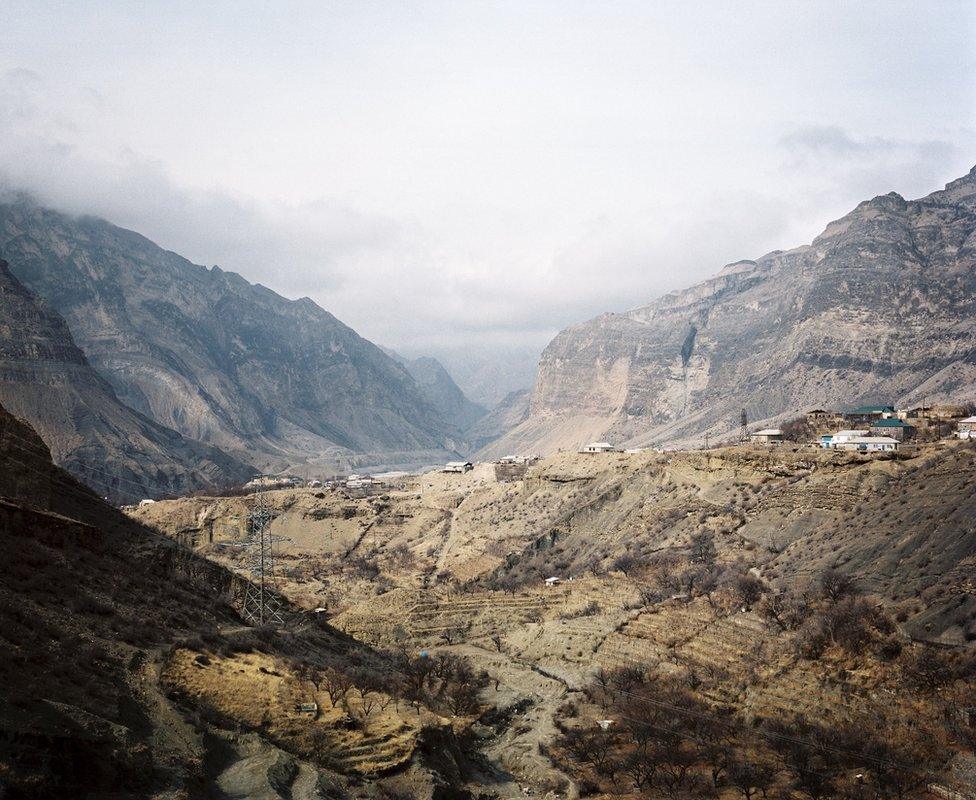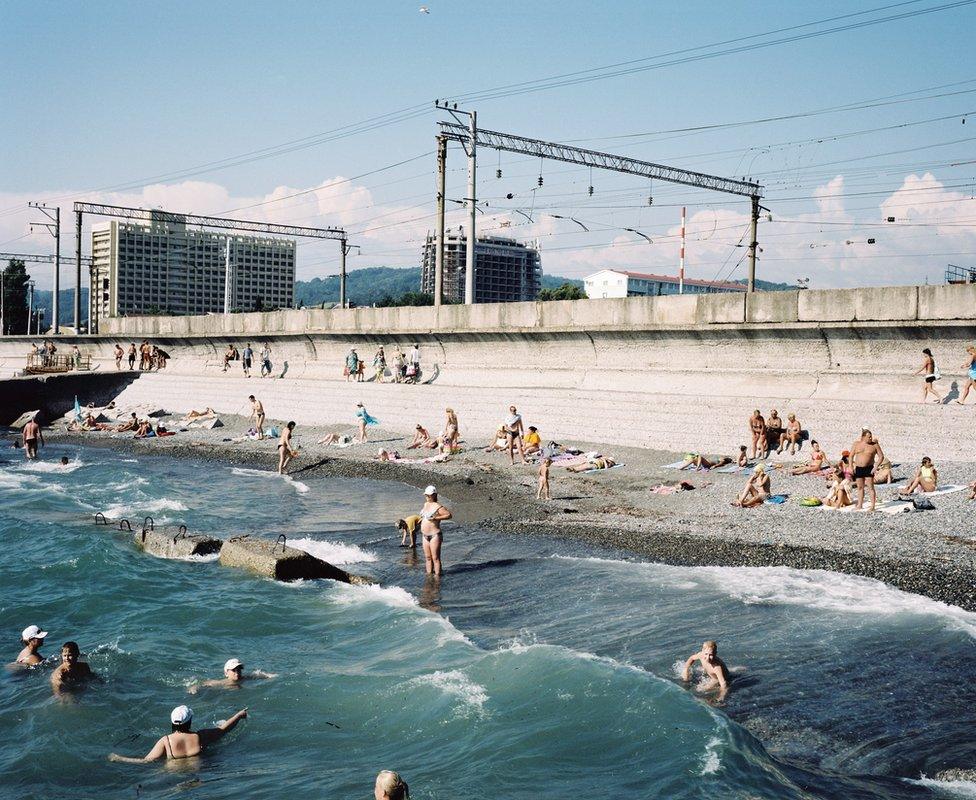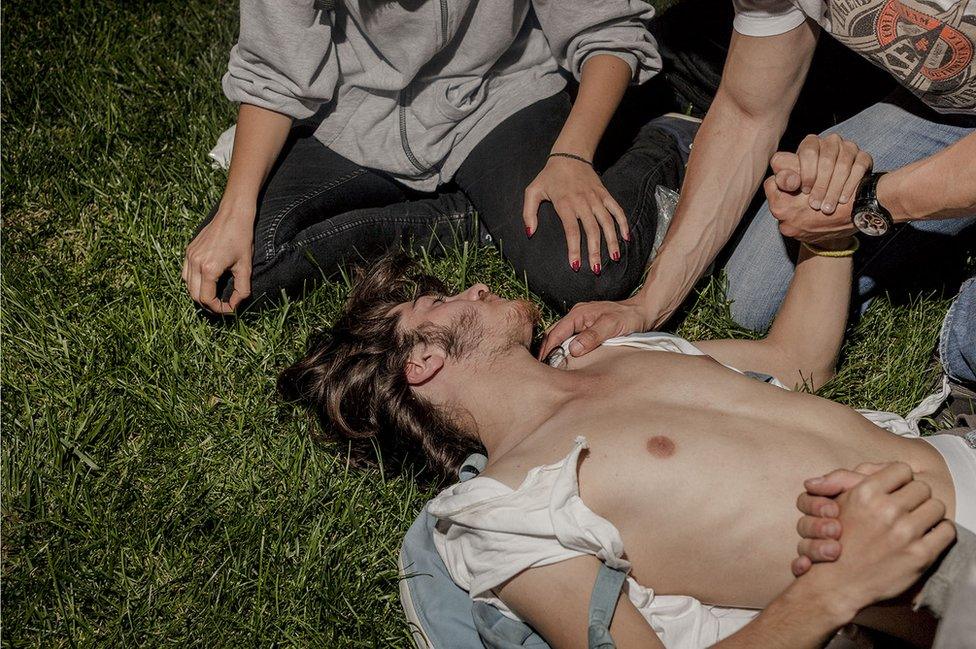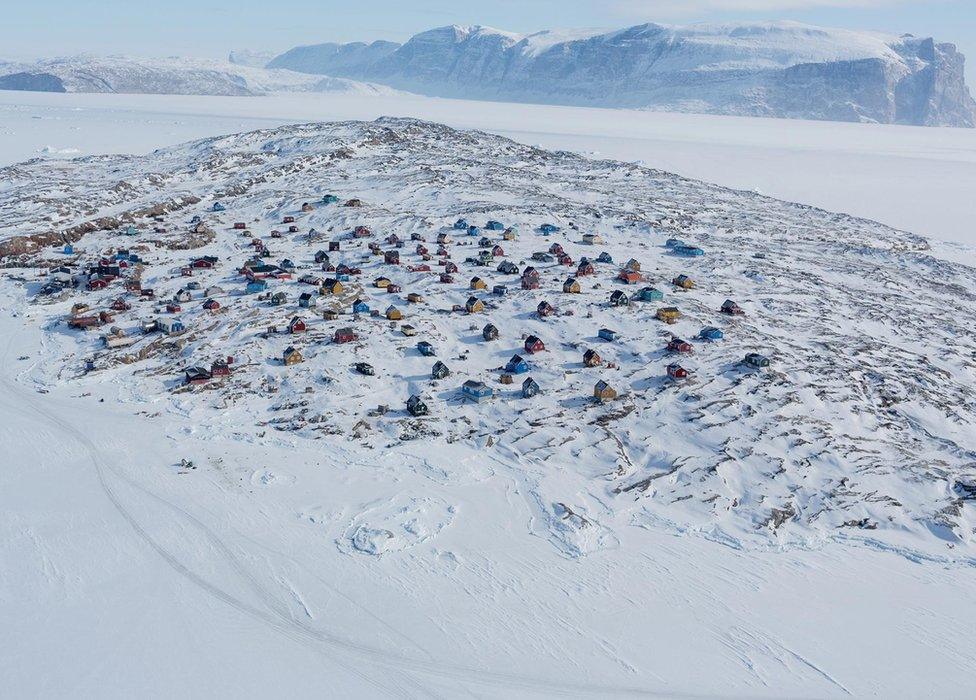Slow photojournalism: The rise of long-term assignments
- Published
Long-term photography projects are not new, but increasing numbers of photographers are embracing in-depth storytelling and creating series over longer periods of time, juggling this work alongside commissioned assignments. Gemma Padley explores this growing trend.
Photographers, especially those working within documentary photography or photojournalism, have always undertaken projects on which they have worked for many months or even years.
In 1955, W. Eugene Smith famously spent a year on a project that was supposed to last only three weeks, having been commissioned to shoot 100 images for a book by Stefan Lorant, Pittsburgh: Story of an American City.
Smith finally stopped having made almost 17,000 photographs, believing he had captured both the essence of the city and America at that time.

View from the road between Shamilkala and Gimry, from The Sochi Project by Rob Hornstra

The beach near Adlersky Kurortny Gorodok in Adler, from The Sochi Project by Rob Hornstra
More recently there is The Sochi Project, Rob Hornstra and Arnold van Bruggen's investigation into Sochi in Russia, the site of the 2014 Winter Olympics, which they worked on for several years in the run-up to the event.
The project has been cited as an example of slow journalism - a body of work that has its roots in detailed research and evolves over a long period of time.
"If you are a photographer living away from your home country, combining personal work with assignments is one way to fund what you are doing," says Guy Martin, who has been living in Istanbul for the past three-and-a-half years, working on City of Dreams. It tells a story of politics and cultural life in Turkey by combining images shot on the sets of Turkish soap operas and at protests in the country.
"In some instances, assignments overlap into areas of interest where your own personal project sits," he adds. "The challenge is to shoot what you need to for the client and then at the same time photograph with a personal vision for your own work. For me, shooting assignments has been essential in allowing me to continue my personal work in Turkey."

A young woman at the Cassablanca Club, Aksaray, Istanbul, during filming of a Turkish soap opera, from City of Dreams by Guy Martin

A man injured by tear gas in the grounds of the Dolmabache Palace, Istanbul, during protests in 2013, from City of Dreams by Guy Martin
Over the past few months, Martin has been expanding his project, helped by a grant from the Magnum Emergency Fund, external.
This kind of funding is essential in enabling photographers to continue their personal long-term work, he says. "Grants, awards and scholarships are a lifeline for me. Without them, no work would be possible. They add to what you can do and how ambitious you want to be with your personal work. With money for expenses covered by awards, grants and scholarships, everything suddenly seems possible."
Ciril Jazbec's on-going work in Greenland on climate change is another example of a long-term project that keeps on gaining momentum.
The Slovenian began On Thin Ice during his master's degree in early 2013 and has since made several trips to the region where he has spent about six months in total. Some of the images were recently published in National Geographic, external.


The project is an example of how a personal body of work can evolve into something that catches media attention, helping to put the photographer on publications' radars and perhaps even leading to future paid work. The potential rewards available as a result of investing time and energy into a long-term project (exposure, future commissions, and so on) are obvious.
This year, with its finger ever on the pulse, the world's largest and most prestigious photojournalism contest World Press Photo, external (WPP), announced the winner and runners-up in a new category - Long-Term Projects - featuring series produced over several months or even years.
Darcy Padilla won with Family Love, external, a body of work about Julie, who is HIV positive and caught up in drugs, which she made over 21 years.
"The new award reflects what's happening in the industry and how photographers are turning to long-term personal projects and in-depth investigations," commented David Campbell, WPP 2015 general secretary, earlier this year. "It was designed to reflect where a lot of work is being done in documentary photography and visual storytelling today."
The new category received more than 500 entries - not bad for its first year - and the WPP has introduced an additional category for 2016 titled Long-Term Projects - Group, to reward teams of two or more photographers who have been collaborating on a single long-term project.
The overall WPP 2015 winning image also came from a long-term project, which the photographer has been working on since 2013.

Jonathan Jacques Louis, 21, and Alexander Semyonov, 25, embrace at home
Danish photographer Mads Nissen won with his image of a gay couple shot in St Petersburg, Russia. The photograph, from Homophobia in Russia, external depicts a moment of tenderness between two lovers and in doing so draws attention to a wider story about the difficulties for lesbian and gay people in Russia where sexual minorities often face discrimination and harassment.
In an age where we are constantly told that print publications are struggling financially and no longer able to support photographers, it's heartening to see the industry get behind image-makers who are channelling a huge amount of time, energy and personal resources into their own projects.
And, given the wealth of tools and opportunities available to photographers, it makes sense that many are taking matters into their own hands, shooting work that means something to them, rather than waiting for a commission to come along.
For Martin, it's possible to "cover your bases in the traditional editorial market", but take advantage of opportunities online including using social media sites to generate interest in a personal project. From here, he says, you can think about incorporating sound and moving image with still images to further the project's scope.
"The main thing you need is a solid idea and a clear personal vision. Use all the tools and contacts that are available to you - old and new, it doesn't matter. From my experience, people are willing to collaborate from an early stage in a personal project, but you have to have that initial idea and imagery, or work-in-progress. From there, the world's your oyster."
Gemma Padley is a freelance journalist specialising in photography who has written for a wide range of publications including British Journal of Photography, The Telegraph, Time and Amateur Photographer. You can follow her on Twitter, external.